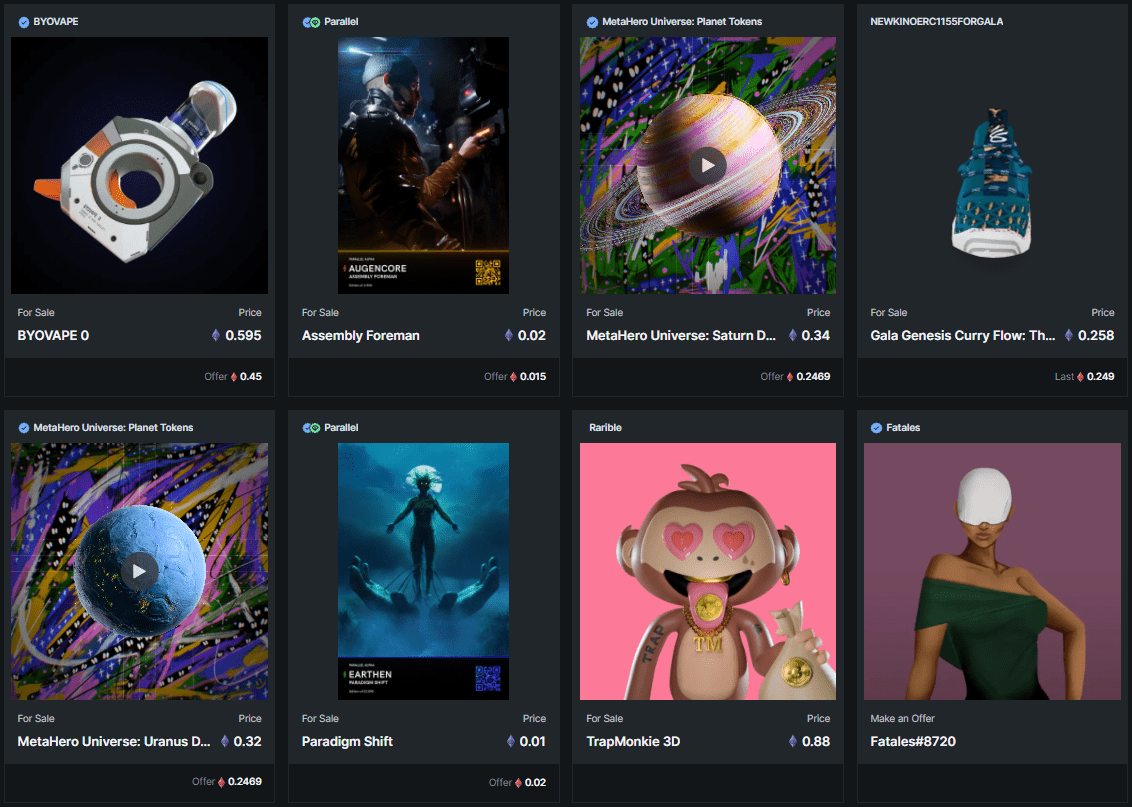Upstart non-fungible token (NFT) marketplace LooksRare launched with a bang this week, transacting over US$1 billion in sales after only debuting on Jan. 10. Total sales figures are more than 40% of market leader OpenSea’s entire sales volume for the past week, according to DappRadar.
LooksRare has achieved this sales volume with only a fraction of the users of OpenSea. On Jan. 13, LooksRare’s sales volumes were more than five times higher than its main competitor, yet it did so with less than 3,000 users, compared to OpenSea’s 70,000.
Some have argued the NFT boom was drawing to a close after a peak in August, but sales volumes on LooksRare alone suggest strong demand remains in the market.
While LooksRare’s figures may seem hard to believe, the platform’s controversial incentive structure reveals how this may have been possible. LooksRare launched by airdropping its native LOOKS token to any OpenSea customer who had spent more than 3 ETH in the second half of 2021. This tactic is known as a “vampire attack” — when one platform uses incentives to lure away users from another — and LooksRare is the second major effort of its kind against OpenSea, the first being Infinity in October last year.
It also rewards users with LOOKS based on total volume traded, raising concerns much of the total sales volume came from wash trading — a process where users buy and sell their own NFTs to generate rewards.
LooksRare says its systems ensure that any wash trading would be unprofitable, as daily LOOKS rewards are fixed while each transaction incurs fees, disincentivizing the practice. Though one industry watcher told Forkast the practice is clearly occurring.
“They did expect [wash trading]; it wasn’t ideal sales but they couldn’t prevent it,” said Yohann Calpu, CryptoSlam’s chief blockchain officer, telling Forkast the NFT aggregation company is trying to track authentic sales figures on the platform for a more accurate representation of the platform’s performance.
Calpu also said that while OpenSea maintained more than 90% of the Ethereum NFT market share, LooksRare has shown competitors can challenge this dominance by offering new features.
“A critique of some of the community was that they really wanted to have an OpenSea token and they were really looking forward to that,” he said. “And when that didn’t happen, I see a lot of the community supported LooksRare.”
Despite the region being such a strong driver for the market, no major NFT marketplaces are based in Asia — both OpenSea and LooksRare are based in the U.S. Anndy Lian, Singapore-based founding member of NFT creative studio Influxo, told Forkast this is a product of the global nature of the technology, which proves that as long as the content is quality, it will be able to find a market.
“We are now in the crypto space; everything is international, everything is global,” he said. “As long as there is the right kind of intellectual property, NFT creators who have that following can [list it] anywhere, and they will get their fans in that region to buy it. Now the market is global, truly global.”
Taiwanese superstar Jay Chou showed this to be the case recently with his NFT collection PhantaBear. Chou’s collection topped Bored Ape Yacht Club’s (BAYC) sales volume on OpenSea earlier in the week with more than 18,000 ETH (US$57,630) in sales volume in the past week — 10% more than BAYC’s for the same time, according to CryptoSlam.
Lian said this was unsurprising given Chou’s stardom in Asia, and that buyers in the region are more likely to buy into a hyped token than investors based elsewhere, who may be more cautious.
“They do not hesitate because they know that by buying there’s a chance to appreciate in value and also the fact that it is a form of status — unlike some friends in the U.S.,” he said, “because the mindset is different.”





